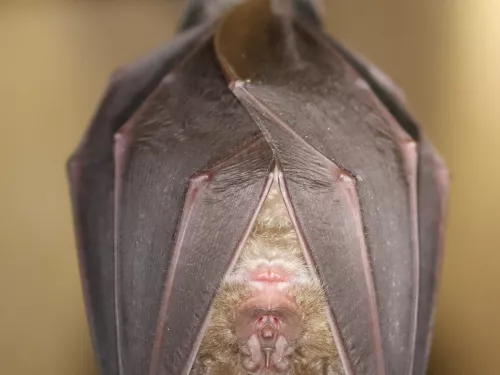Greater burdock
Greater burdock is familiar to us as the sticky plant that children delight in, frequently throwing the burs at each other. It actually uses these hooked seed heads to help disperse its seeds.
Greater burdock is familiar to us as the sticky plant that children delight in, frequently throwing the burs at each other. It actually uses these hooked seed heads to help disperse its seeds.
The Greater butterfly-orchid is a tall orchid of hay meadows, grasslands and ancient woodlands. It has whitish-green flowers that have spreading petals and sepals - a bit like the wings of a butterfly.
Greater celandine is a very common plant that spreads easily in the garden, on waste ground and in hedgerows. It is considered a weed, but the small, yellow flowers provide nectar for insects.

The greater horseshoe bat was once a cave-dweller, but now tends to roost in old buildings, such as churches and barns. It is rare in the UK and, like many other bats, declining in number.
The ragged-edged, purple flower heads of Greater knapweed bloom on sunny chalk grasslands and clifftops, and along woodland rides. They attract clouds of butterflies.
Pushing its way up through the cracks in pavements, the straw-coloured flower spikes of greater plantain or 'broadleaf plantain' are a familiar sight. This 'weed' also pops up in lawns, on roadsides and along field edges.
A tussocky sedge, Greater pond sedge has stout, upright flower spikes, strap-like leaves and triangular stems. It prefers lowland wetland habitats on heavy soils.
Star-of-Bethlehem' and 'wedding cakes' are just some of the other names for greater stitchwort. Look for its pretty, star-shaped, white flowers in woodlands and along hedgerows and roadside verges.
Large scale drainage in the UK has seen a massive reduction in the range of this sensitive aquatic plant which now only occurs in around 50 sites in England.
The green hairstreak is the UK's only green butterfly. Look out for the vibrant, metallic sheen of the undersides of its wings on grassland and moorland, and along woodland rides.
The green sandpiper is a very rare breeding bird in the UK, and is mainly seen on migration in autumn. Look out for it feeding around marshes, flooded gravel pits and rivers. It even likes sewage works!
This small, round sea urchin is (unsurprisingly!) green in colour and can be found on rocky shores around the UK.